Paper pulp, cardboard, and recycled materials are emerging as unexpected heroes in contemporary furniture design. These once-discarded substances are being transformed through innovative techniques into durable, textured, and visually compelling pieces that defy traditional expectations. By embracing the raw qualities and layered histories of these materials, designers craft furniture that celebrates both sustainability and the unique tactile character inherent in repurposed matter.
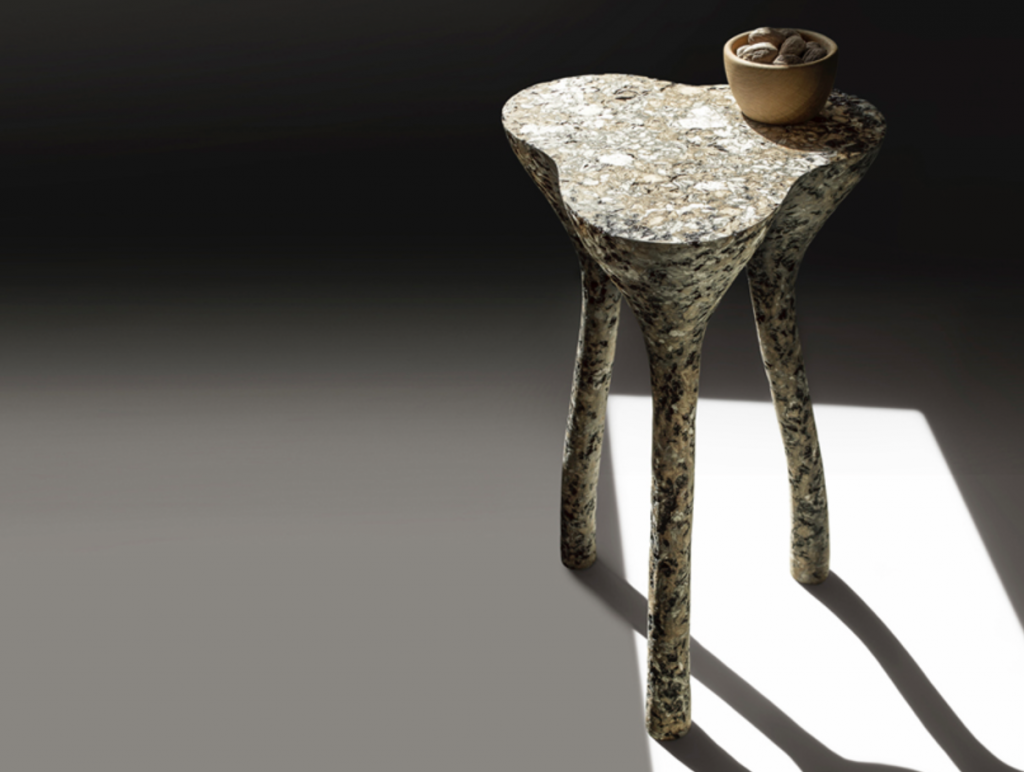
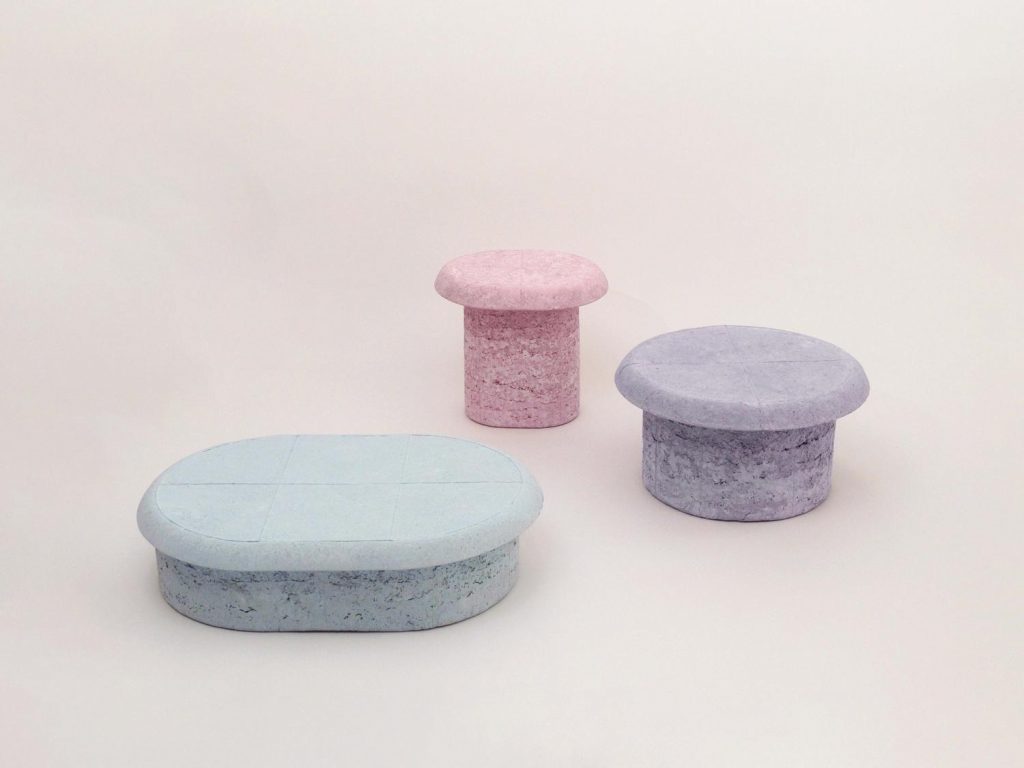
Pastille Collection by Emeline Ong
Singapore-based designer Emeline Ong’s Pastille Collection reimagines furniture making through an innovative use of composite paper pulp, shaped by custom 3D-printed molds to create monolithic tables. These pieces stand out for their gentle, candy-inspired colors like bubblegum pink and lilac, which contrast strikingly with their raw, textured surfaces. The tables’ sculptural presence is heightened by minimal graphic lines that trace the visible seams formed during the demolding process, a direct imprint of the handcrafted production method.

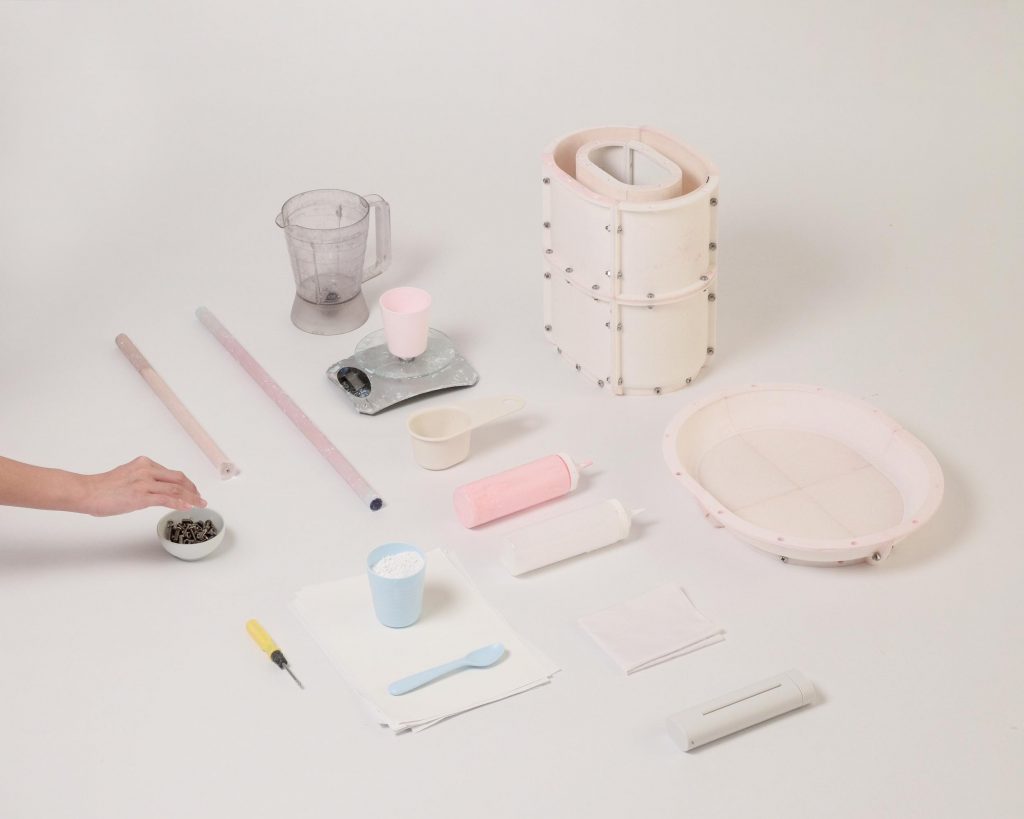
Pastille Collection by Emeline Ong
The collection’s design highlights the intimate relationship between material and maker. Ong’s process involves layering and compressing paper pulp — often recycled from everyday items like discarded school notes — by hand using simple tools, emphasizing sustainable craft and artisanal skill. The resulting texture and layered seams become aesthetic features rather than imperfections, embodying the beauty of construction and the traces left by the hands that shaped them.
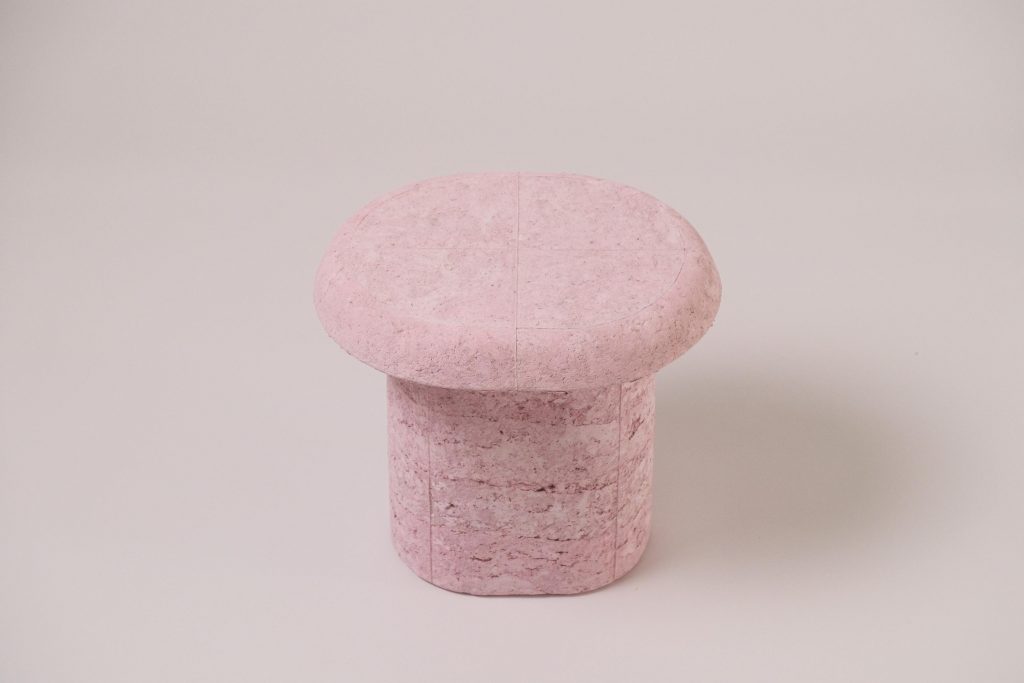
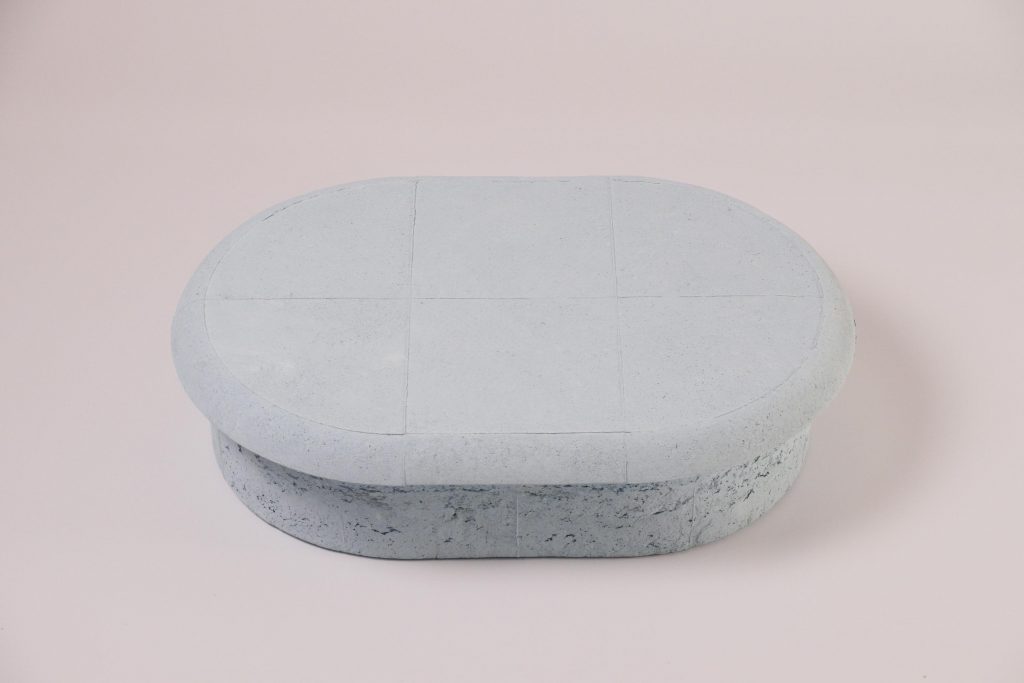
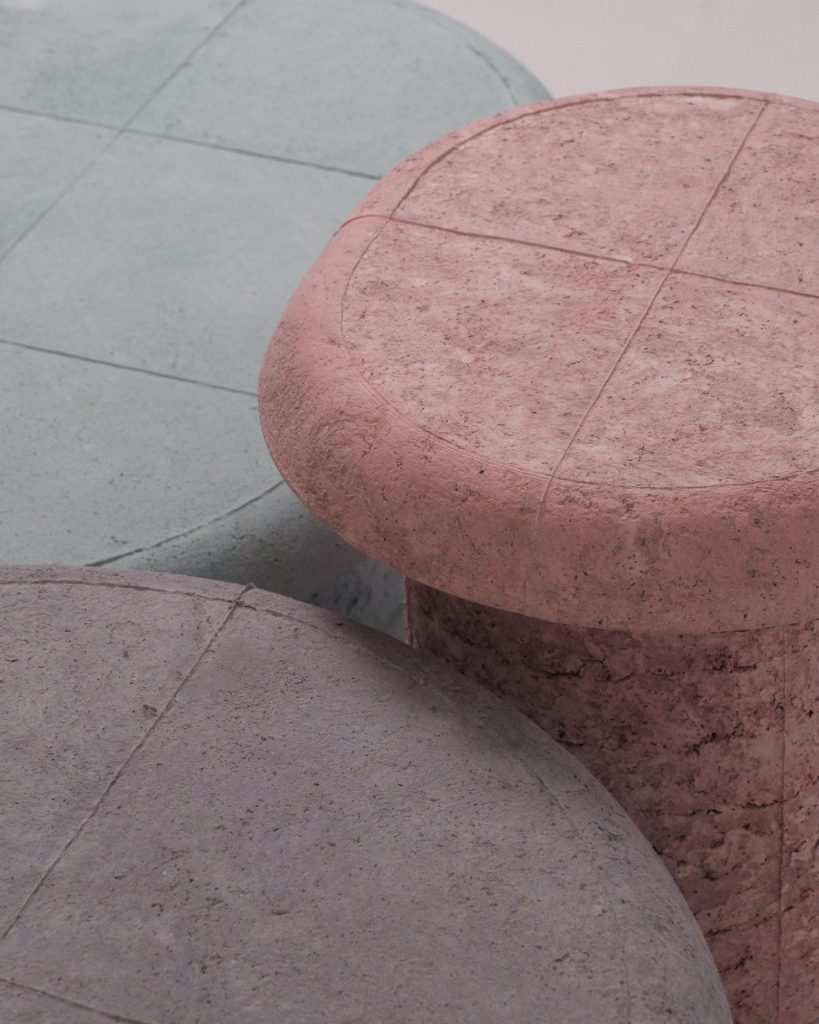
Pastille Collection by Emeline Ong
To overcome practical limitations, such as the build size constraints of hobbyist 3D printers, Ong developed a split mold system where smaller molds combine to form larger pieces. This innovative approach not only enabled the creation of sizable tables but also introduced a distinctive design language that celebrates the modularity and rawness of the materials. The Pastille Collection ultimately fuses femininity and industrial roughness, making the process itself a core element of the furniture’s artistic and tactile appeal.
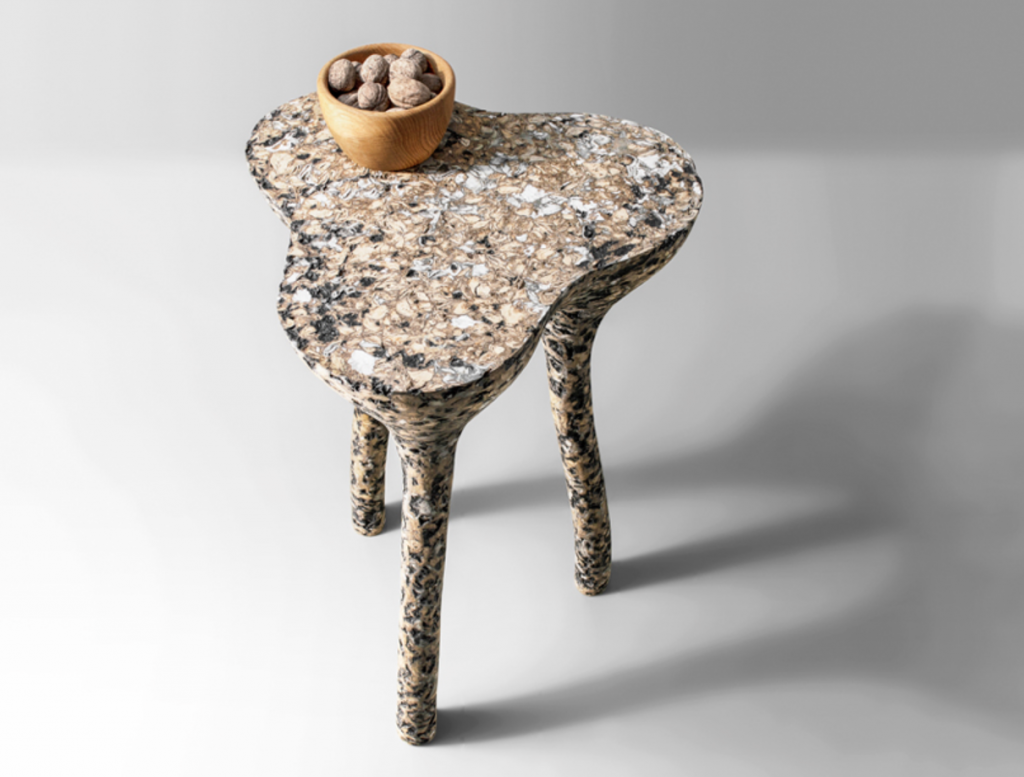
TRIPOD collection by Donatas Žukauskas (also header image)
Building on the innovative use of paper pulp in furniture design, Lithuanian designer Donatas Žukauskas takes sustainability a step further with his TRIPOD collection, a series of side tables crafted primarily from recycled paper and cardboard. Challenging the perception of paper as fragile, Žukauskas transforms these humble materials into a durable, wood-like composite with a rich, mottled texture that combines both visual and tactile appeal. His work exemplifies how discarded resources can be reinvented into functional art pieces that serve as striking focal points in any interior.
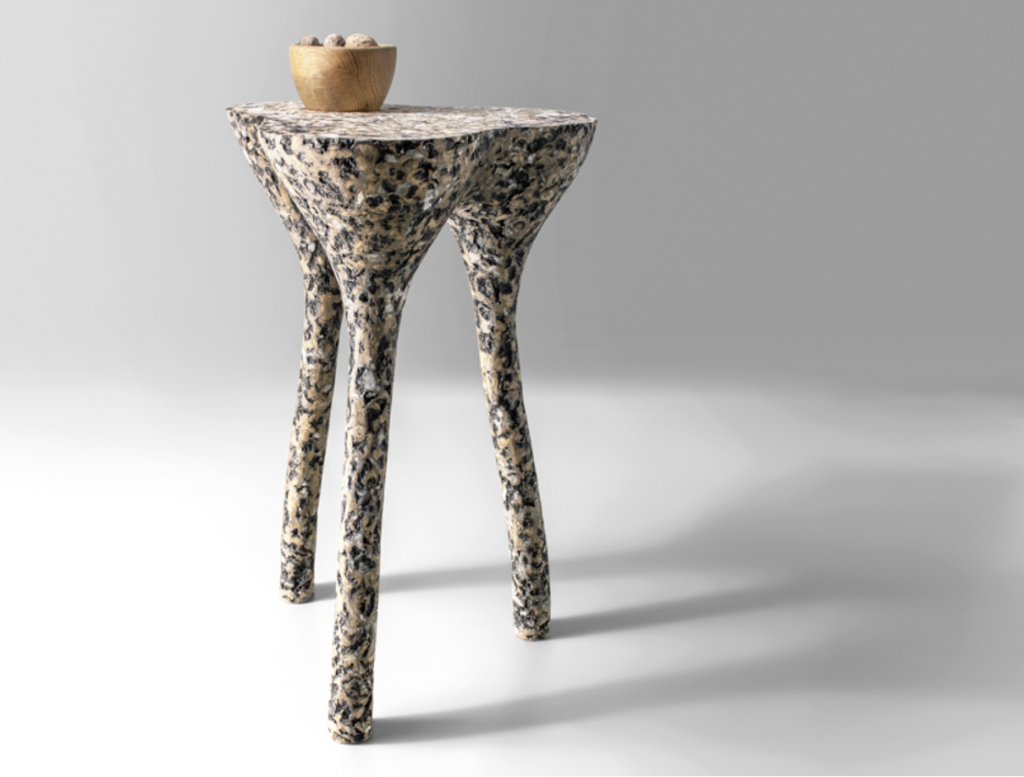
TRIPOD collection by Donatas Žukauskas
Through careful experimentation and the incorporation of supplementary components, the TRIPOD tables achieve strength and resilience comparable to traditional wood, even exhibiting slight elasticity to resist cracking or crumbling. This balance of durability and texture makes them not only practical but long-lasting, maintaining their appearance despite exposure to moisture or dust and requiring minimal maintenance. Žukauskas’s approach highlights the potential of recycled materials to fulfill both environmental and aesthetic criteria, redefining sustainable furniture design.
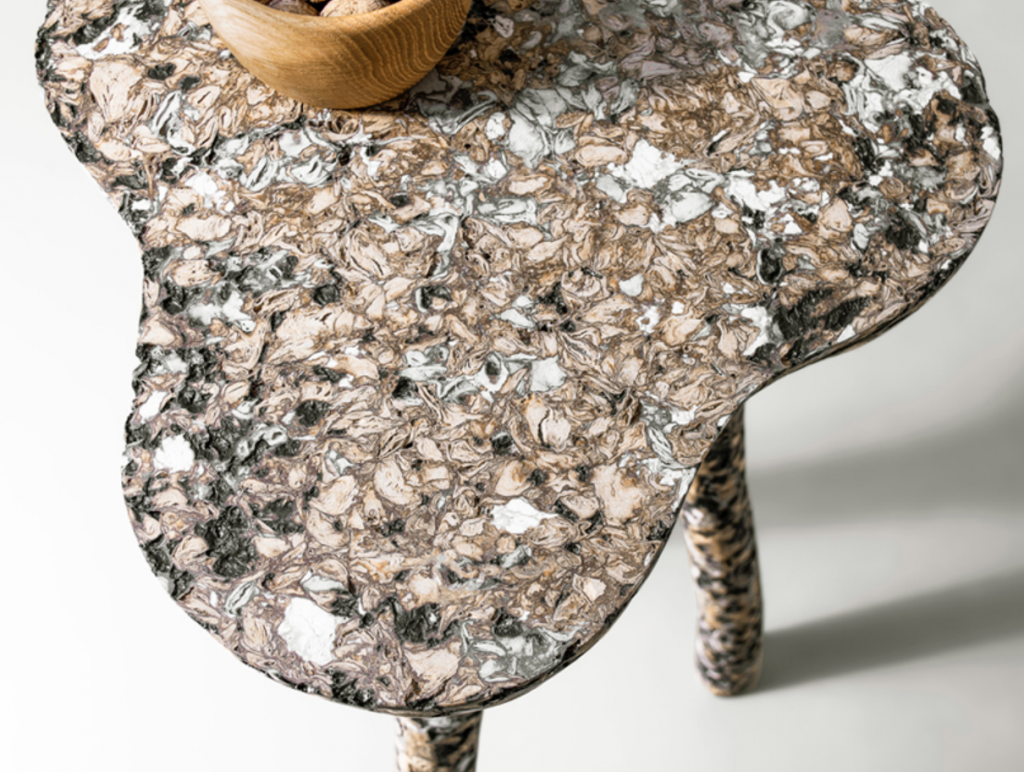
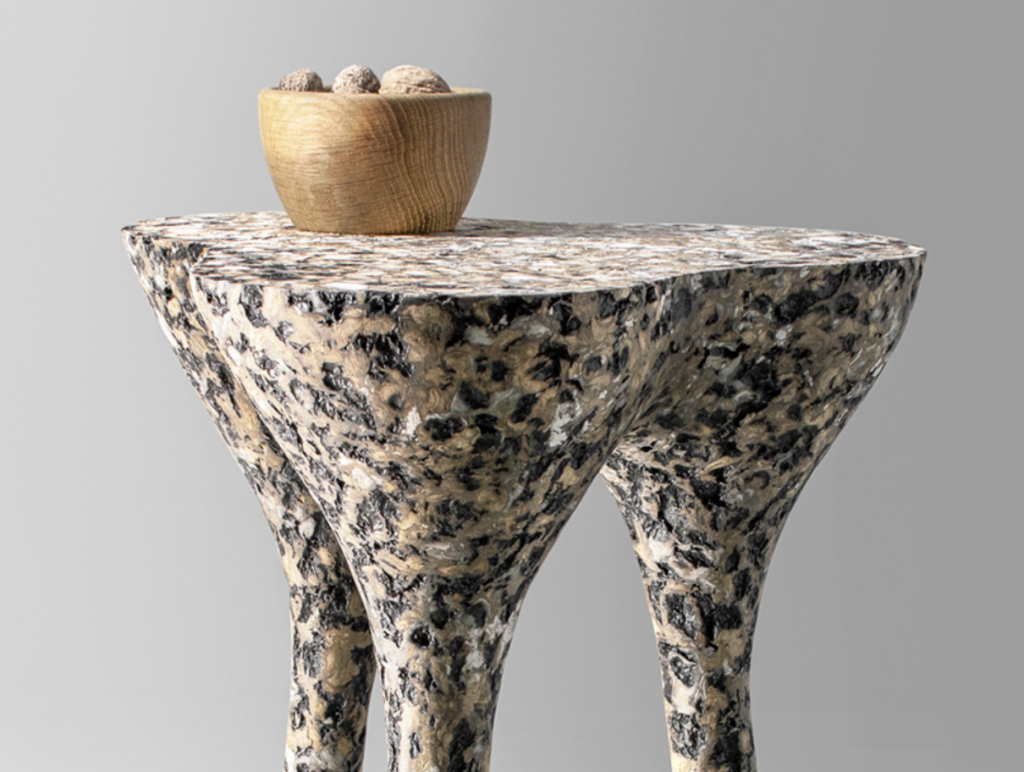
TRIPOD collection by Donatas Žukauskas
The TRIPOD collection stands out not only for its sustainable ethos but also for its elegant simplicity and versatility. Each table’s tripod base offers stability and a distinctive geometric form, while the textured surface invites closer inspection, revealing the layered history of its recycled components.
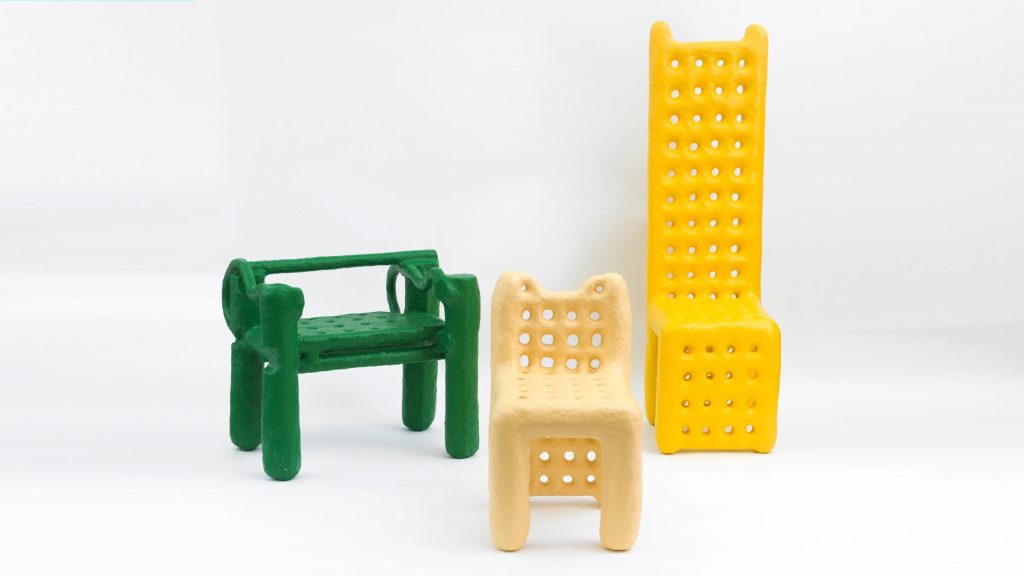
Furniture by Thomas Barger
Brooklyn-based artist Thomas Barger transforms his childhood memories from rural Illinois into a whimsical series of furniture that blurs the line between sculpture and functional design. His pieces feature chunky, curvaceous forms with playful, exaggerated shapes—like throne-like chairs with perforated, uneven backs inspired by natural sand formations from his youth. These designs combine utilitarian function with a nostalgic, almost cartoonish aesthetic, rendered in bold block colors such as pastel pink, green, and yellow.
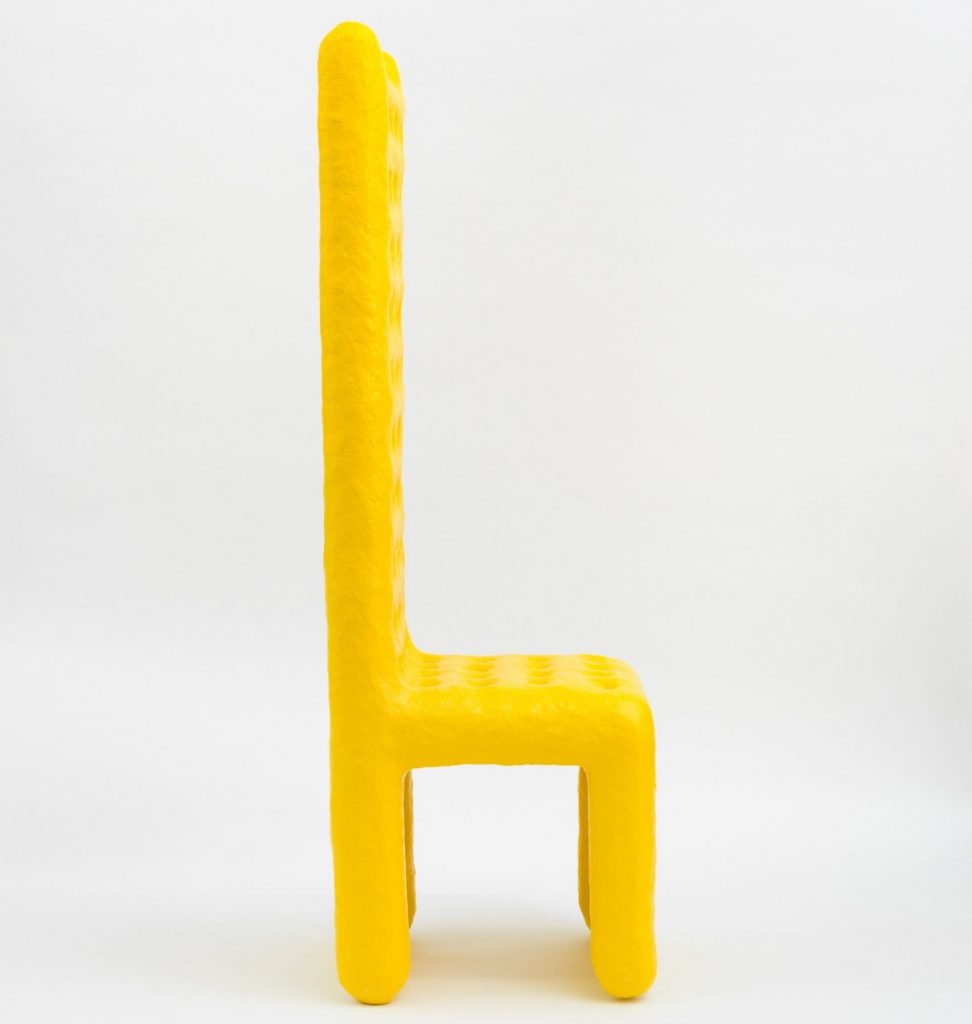
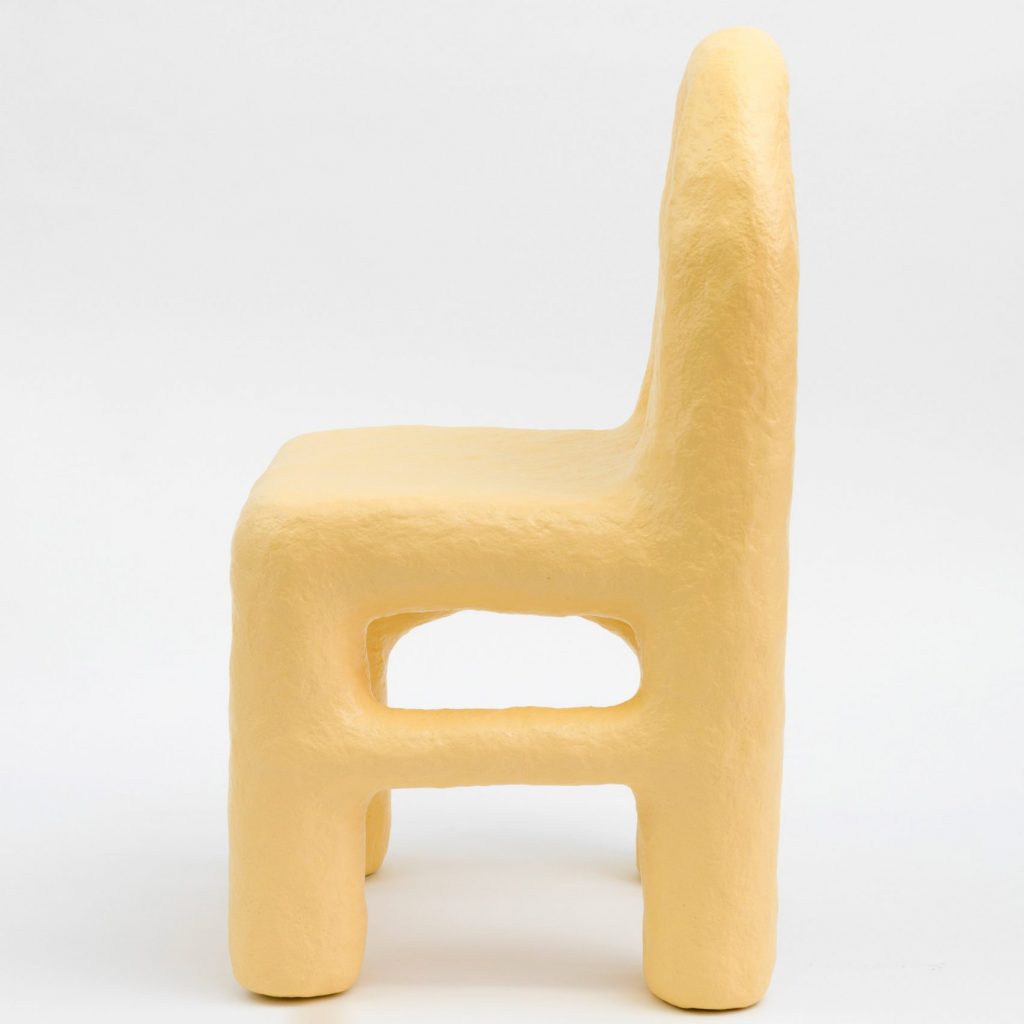
Furniture by Thomas Barger
Barger’s process involves upcycling existing furniture by layering paper pulp onto reclaimed chairs or foam frames sourced online, creating unique textures and volumes. The recycled paper, collected from city recycling bins and mulched in a kitchen blender, is adhered with resin and painted to finish each piece. This method not only highlights sustainability but also infuses the furniture with a tactile, handmade quality that reflects both his personal history and artistic expression.
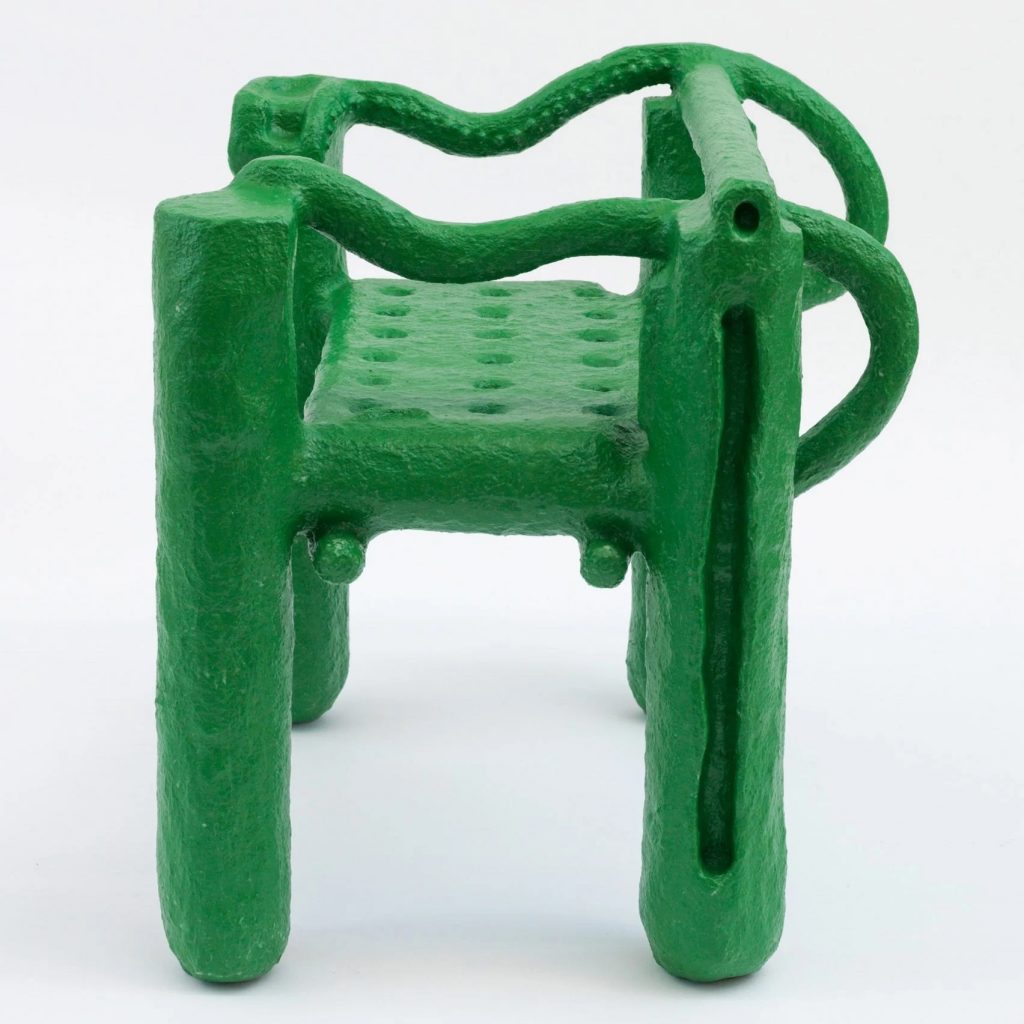
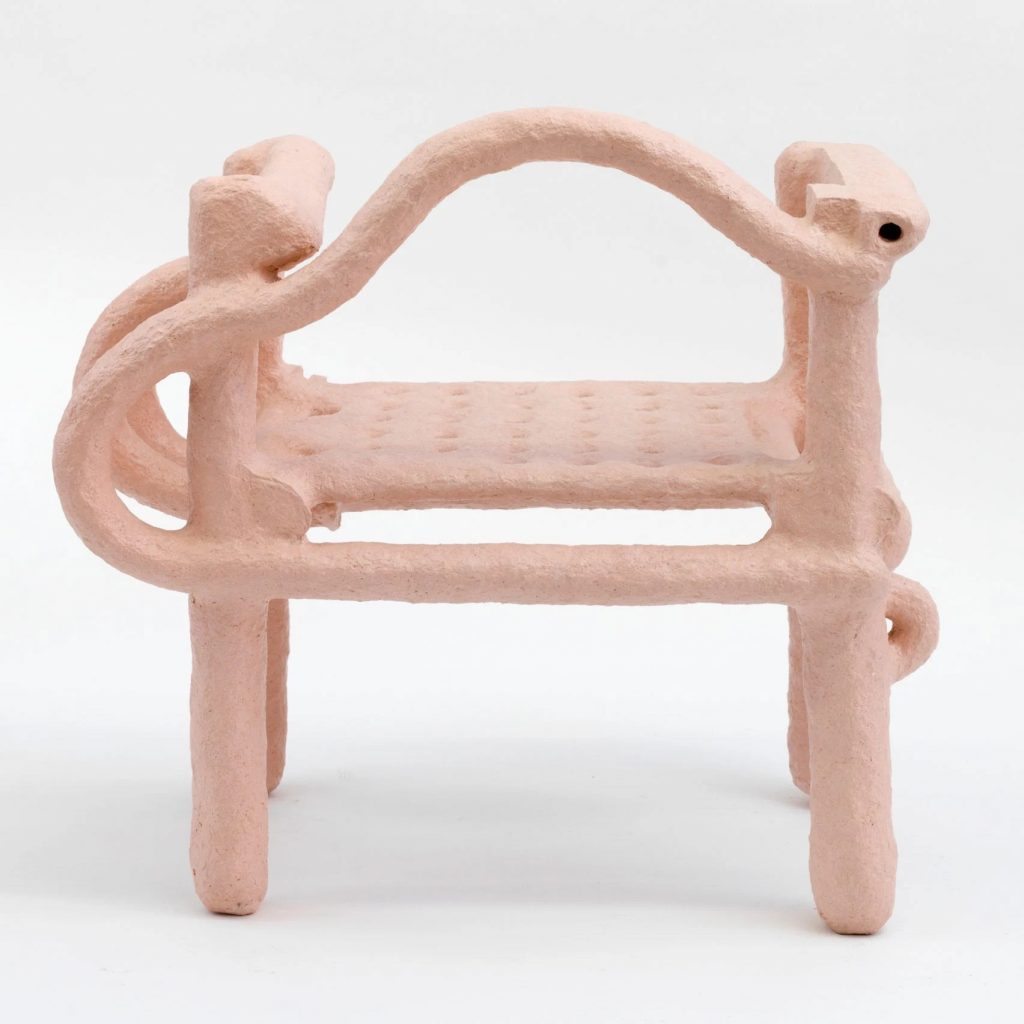
Furniture by Thomas Barger
Mentored by artist Misha Kahn, known for similar sculptural furniture made from found objects, Barger’s work continues a lineage of playful, upcycled design that challenges traditional ideas of form and material. His furniture invites viewers to reconsider everyday objects as sites of memory, identity, and creativity, bridging past experiences with present artistry.